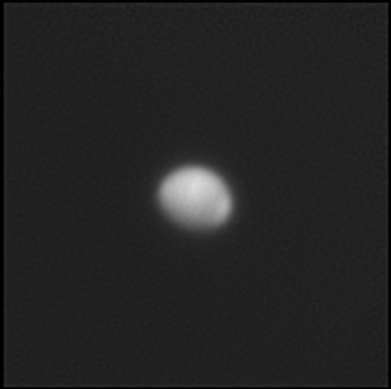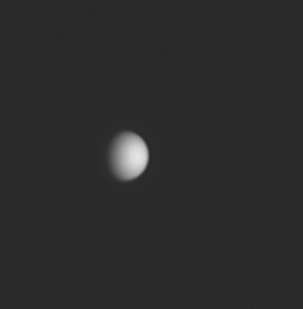Venus passed us inside Earth’s orbit on the 3rd of June this year at inferior conjunction. It is still on the same side of the Sun as we are which is why we currently see Venus in a slight crescent phase. Right now, as it pulls ahead of us, we see 46% of its daytime side, the rest is its nighttime side. It will lose the crescent next week on the 13th when the planet will be at greatest western elongation and be 50% lit. It will then continue on into a waxing gibbous phase.
In the image you can see some detail in the planet’s cloud tops. In order to see anything other than a bright featureless shape you have to use a UV filter (325-381 nm).
I attempted to get a couple of shots yesterday (the 4th) around noon. The planet had crossed my meridian but the Sun had not. This alignment allowed me to shield the scope and camera with a partially open dome. I was being way too optimistic. The atmosphere was terribly turbulent. I could find Venus but there was no way to find focus.
The way to fix that problem is to try and image Venus before the Sun has warmed the surrounding terrain. So, last night I went to bed uncharacteristically early (0100) and got up before 0700. That is when Venus cleared the eastern tree line. The Sun was at an altitude of only 10°. The best separation that I can observe with the horizon I have will be next week (the 13th) when the Sun will be only 6° above the horizon when Venus clears the trees.
For an explanation of caption information see exposure data.


![Exposure Data[(V)TB:90x1.4ms]](https://ptobservatory.com/wp-content/uploads/2018/09/crp_2018-09-08-1936_9-TH-UVenus_lapl4_ap23-294x300.png)
